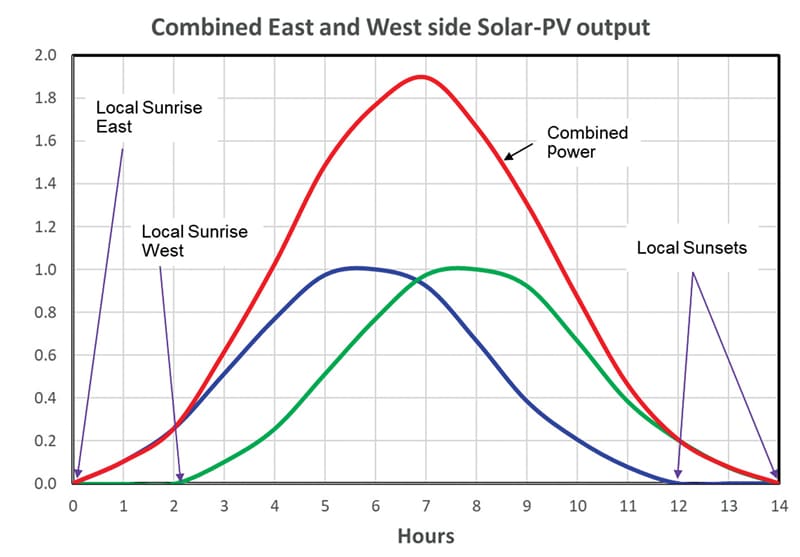Embracing innovative solutions like a dedicated east-west HVDC corridor for combined solar-PV and wind power transmission can pave the way for a more sustainable energy future,
blending efficiency with environmental stewardship.
The energy mix of our electric grid is changing very fast. Every year, renewable energy is being added to combat global warming. Solar-PV and wind power are the two major renewable sources. However, both these sources are highly fluctuating in nature. Hence, as their share in the grid increases, the chances of the grid becoming unstable are higher. Therefore, extra measures must be taken to keep the grid stable. Table 1 shows the energy mix.
| Table 1 India’s installed power generation capacity | ||||||
| Thermal | Nuclear | Renewables | Total | Units | ||
| Hydro | Solar | Wind | ||||
| 237 | 7 | 47 | 67 | 42 | 400 | GW |
| 59.25 | 1.75 | 11.8 | 16.8 | 10.5 | 100 | % |
Hybrid (solar-PV+wind) farms are being established, as solar power generation happens during the day, while wind power is mostly available at night. Such hybrid farms offer a steady output throughout 24 hours. There are plans to establish grid-scale batteries which store energy whenever there is excess generation. The stored energy is used when the demand is more than the generation. Here, we propose a more elaborate scheme, which combines different geographical locations and time zones for establishing solar-PV and wind farms. These farms are interconnected through high-voltage DC (HVDC) transmission lines. Such a power corridor offers multiple benefits.
Why East-West
Our country lies between longitudes 68° 07’ E (Gujarat) and 97° 25’ E (Arunachal Pradesh), with an angle difference of 29° 18’. The rotation time of Earth per degree longitude is approximately 4 minutes.
So, the rotation time of Earth per degree longitude=24 hrs x 60 min/360=4 minutes.
And the time taken to cover 29° 18’ is given by (29° x 4)+((18’/60) x 4)=117.2 minutes.
Thus, the time difference between sunrise in the east to sunrise in the west is almost two hours. This means a solar plant in the east starts generating power two hours before the plant in the west. Similarly, in the evening, the solar power plant continues to generate power for two hours after the plant in the east has stopped its generation. This is shown in Fig. 1. The west-side power generation (green) is delayed by two hours with respect to the east (blue). The combined power is shown in red. By having two such plants, we can extend the generation of solar power for an additional two hours. To achieve this, a bidirectional transmission line between these two plants is necessary.

With such vast distance between these two locations, wind patterns will also differ. Hence, it is possible that when wind is strong in one location, the other location may have less wind, and vice versa. This difference is useful for achieving uniform power generation from windmills. Thus, the combined effect of solar and wind generation at two geographically different locations will help in generating steadier power for 24 hours.
Why HVDC
The distance between the east and west extreme points is 2933km. For such a long distance, only HVDC lines are suitable. HVDC connects two terminal stations. At these stations, AC is converted to DC, then transmitted over the line, received, and converted back to AC. The advantages of HVDC transmission include:
- For very long distances (beyond breakeven distance), it transmits power very economically
- Reduced power losses due to the absence of reactive power, absence of skin effect, and no dielectric losses
- Thinner and cheaper conductors. Only two conductors are required, unlike three in HVAC lines, hence a narrower right of way, reducing land acquisition requirements
- Full control over power flow
- Easily integrates with smart grid
A major limitation of HVDC is that it transmits bulk power between two terminals only. And, to cover such a long distance, the initial investment required is much higher. To keep the initial investment on the lower side and to maximise utilisation, consider these points:









